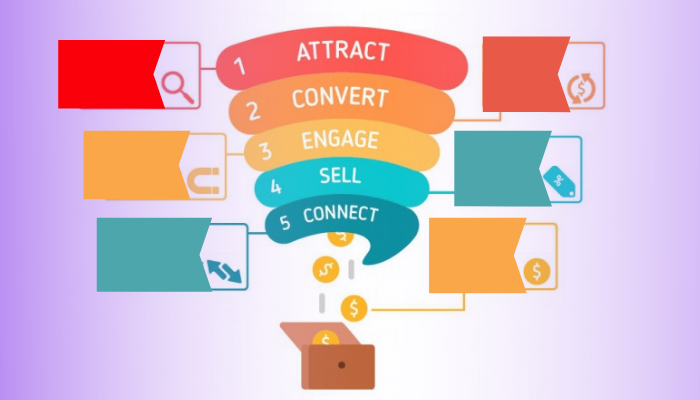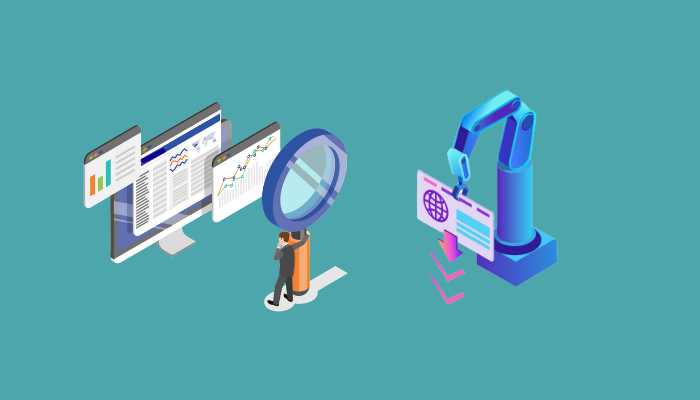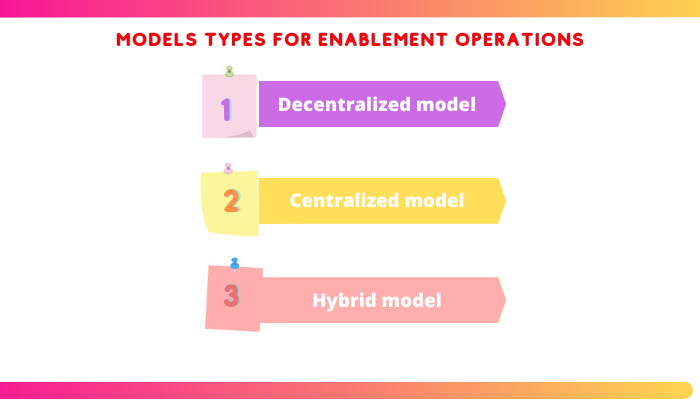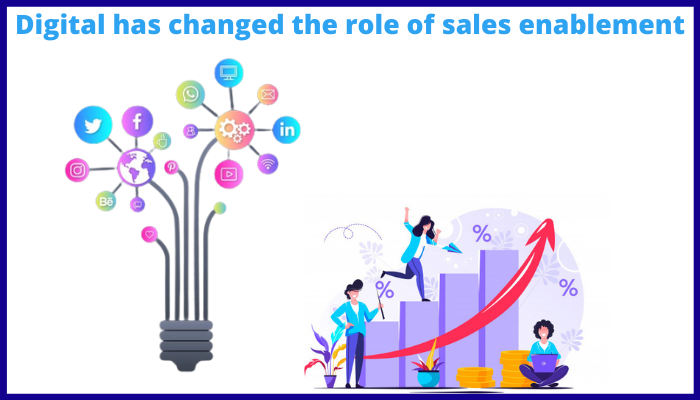Digitization and technological explosion has revolutionized every industry and have shown a new path to businesses to please their existing and potential buyers. Interactive media and customer analytics and intelligence can incredibly enhance your relationship with your audience. Facilities such as data scrubbing, data scraping play a critical role in detailed persona research and product or services personalization. Thanks to companies like bizprospex, it is much easier and cost-effective to avail these services and deliver a much-elevated customers’ experience.
Despite this extreme digitization in the buyer’s experience, many companies still rely on human interactions. Typical use cases are when salespeople communicate to order for supply replenishment or sales team meeting customers to deliberate on an intricate project. However, the impact of digitization is increasingly transforming the B2B businesses as well. The companies, just like individual buyers, prefer to research products and services by themselves instead of relying on the vendors’ opinions.
This paradigm shift has drastically changed the role of marketers and sellers. Sellers are no more the leader of a buying dialog, they are rather a part of the discussion. They are supposed to satisfactorily answer business-oriented questions such as how a product or service applies to a specific use case. They may also be asked to explain the digital content that the customer has found while researching for the product.
This has initiated a complete sales enablement movement where the marketers, who have already adopted digital delegate direct support to sales. By application of their digital capabilities, marketers help in enhancing sales productivity and brand management. Numerous companies across different industry verticals have adopted the new role of sales enablement (SE) that includes traditional sales training and more contemporary on-demand services from the marketing team and other colleagues.
This new role of SE is often set up in either or both sales and marketing departments and the work is shared across many shoulders. Also, the market is flooded with dedicated software solutions to support the new role of SE. You can choose from a wide assortment of services and features of these new CRM and marketing automation software providers to pick the best fit for your organization.
The shift in the sales environment

With digitization entering every aspect of businesses, sales processes have grown more collaborative than they have ever been. The extent you go to sell your products and services and B2B lead generation has grown much complex over the years. With the exponential growth in digital tools and platforms customers have begun to demand greater engagement and flexibility, and full control over the buying process. Due to this change, sustaining the end-to-end selling and managing the entire customer lifecycle has become more difficult and intricate.
Also Read: How B2B sales have evolved in the past 10 years
The change has made the sales enablement an orchestration of a perplexing assortment of a wide range of activities. These activities bring together myriads of organizations, processes, and technologies together to serve marketing, sales, supply chain, product development, finance, HR, etc. The sales enablement is responsible not only for training but also to build better customer-engagement capabilities, drawing valuable analytics and insight for more profitable sales strategies, and delegating operational and transactional support for the entire sell-through-delivery cycle.
Digitization is providing incredible insight into customers’ behavior to assess the engagement and effectiveness of sales strategies. Sales enablement is armed with plenty of information to support the sales force with winning sales strategies and real-time customers’ behavior to accomplish their mission.
Defining a consistent and rational go-to-market strategy

Having an effective game plan to engage your customers and keep them captivated throughout the lifecycle is only possible with a comprehensive understanding of your audience and following an integrated approach. You need to consider a complete customer value proposition and overall business strategies to draft their go-to-market strategy. Utilizing the power of data verification and web scraping services can significantly push in doing so.
Knowing your customers is the only way to define a go-to-market strategy that could yield high engagement and conversion rates. Customers’ data for this deliberation is collected across the enterprise. However, sales enablement plays a critical role in deriving insights from this data that guides the sales and marketing teams. SE banks of vigorous Market research and data mining services to determine the best way to draw and retain customers and deliver them beyond their expectations. It also uses techniques like resource monitoring, continuous supplier assessment skip tracing services, etc to eliminate factors that can hamper the implementation of the enterprise’s marketing strategy.
Sales enablement must take an active seat at the strategy-making table to avoid unnecessary complexity, access expenses, and reactive calls that would lead to a poor marketing and sales strategy.
Developing capabilities around strategies
In addition to drafting an effective go-to-market strategy, sales enablement also has to develop capabilities to ensure its successful execution. It must define ways of customer data analysis, insight derivation, planning and execution, and continuous refinement. Services from providers such as LeadsProspex incredibly simplify and reduce the efforts in analyzing data of customers, vendors, and other market players and fueling the sale enablement decisions with the help of data appending services and email appending services. You need to continuously assess the full spectrum of your capabilities including technology, analytics, and skills to timely identify gaps and take corrective measures.
Your company’s capability building depends largely on your go-to-market strategy. You can either choose to be the innovative leader who propels the market by introducing new services and products to the customers or be the quick follower who rapidly develops what is running in the market at a competitive price. Based on the kind of strategy you choose, sales enablement must envision and build the capability stack that delivers value from prospect to cash.
Centralization-based models for sales enablement operations

Often the role of sales enablement differs in different companies. It depends on how they define its involvement and what is expected from it. Although in today’s modern business environment it is imperative to establish an all-inclusive view of sales enablement to ensure high B2B lead generation, some companies choose to differ from it. Companies can choose to have a centralized approach by giving all responsibility to sales enablement or follow a decentralized model by delegating the analytics and decision-making tasks across the enterprise.
-
Decentralized model
In this model, decision-making takes place across all units in the organization and is delivered to sales enablement. It allows a high degree of personalization for customers and reduces execution time and time-to-market. Such fragmented decision rights can sometimes restrict your scaling by global processes. It also presents tough challenges in standardizing cross-regional aspects.
-
Centralized model
This model emphasizes fully consolidating the decision-making to sales enablement and business units only set the expectations and policies. This ensures 100% alignment across all business processes. Also, back-office consolidation makes the workflow much easy to comprehend. However, this model does not delegate much flexibility to local units and can result in significant gaps in tailoring last mile needs for the business.
-
Hybrid model
This approach allows you to let the business units own the customer-facing decisions and resource deployment and centralize the rest to sales enablement. It allows a rapid and greater degree of scalability and establishes accountability for sales enablement at the regional level. Although it is suitable in most circumstances, there can be some friction between business units and sales enablement. This can lead to poor alignment across the enterprise.
Ceasing the sight on the customers and developing a bold vision
Effective sales enablement and capability development call for a thorough transformation in the companies that lets the sales force make effective efforts to improve sales. Companies need to tailor a roadmap and develop a long-term vision while also boosting daily business and grabbing short-term wins. You can only be sure of the success of the transformation by defining a clear vision, understanding the capabilities you have or need to achieve the vision, and having in place a strategy to take your vision to the market.
Continuous digitization of the engagement and interaction media that connects you to your audience creates ongoing fluctuations in market demands. You need to be able to hit a moving target to achieve your operational and organizational goals. Sales enablement has to adapt to this changing environment and create flexible and adjustable transformation strategies to accommodate these inevitable changes.
Internal scaling of sales enablement by embracing swift technological transformation
Sales enablement is under continuous transformation and scaling. This calls for enabling the managers to stay abreast with the changes. In addition to motivating the people outside the team to involve in training, sales enablement must also ensure that the training is followed in everyday operations.
The new model distributes the daily training responsibilities and liberates the enablement team to focus on deriving metrics and effective and efficient methods to utilize new technologies. Digital evolution has increased the responsibility of the sales enablement team making it more prestigious and crucial in enterprise operations and growth.
Conclusion
Gone are the days when sales enablement used to be a luxury. In the present day, sales enablement is a vital capability for companies to battle and win the constantly changing market trends, customer needs and expectations, and unprecedented competition. Sales enablement not only trains the employees but also plays a crucial role in the processes of massive customer information coming in from digital media.
Sales enablement draws valuable insight and formulates strategies that allow the sales and marketing teams to elevate service standards that are delegated to the customers. It has become the central pillar of enterprise growth and is likely to continuously evolve in the coming years.
